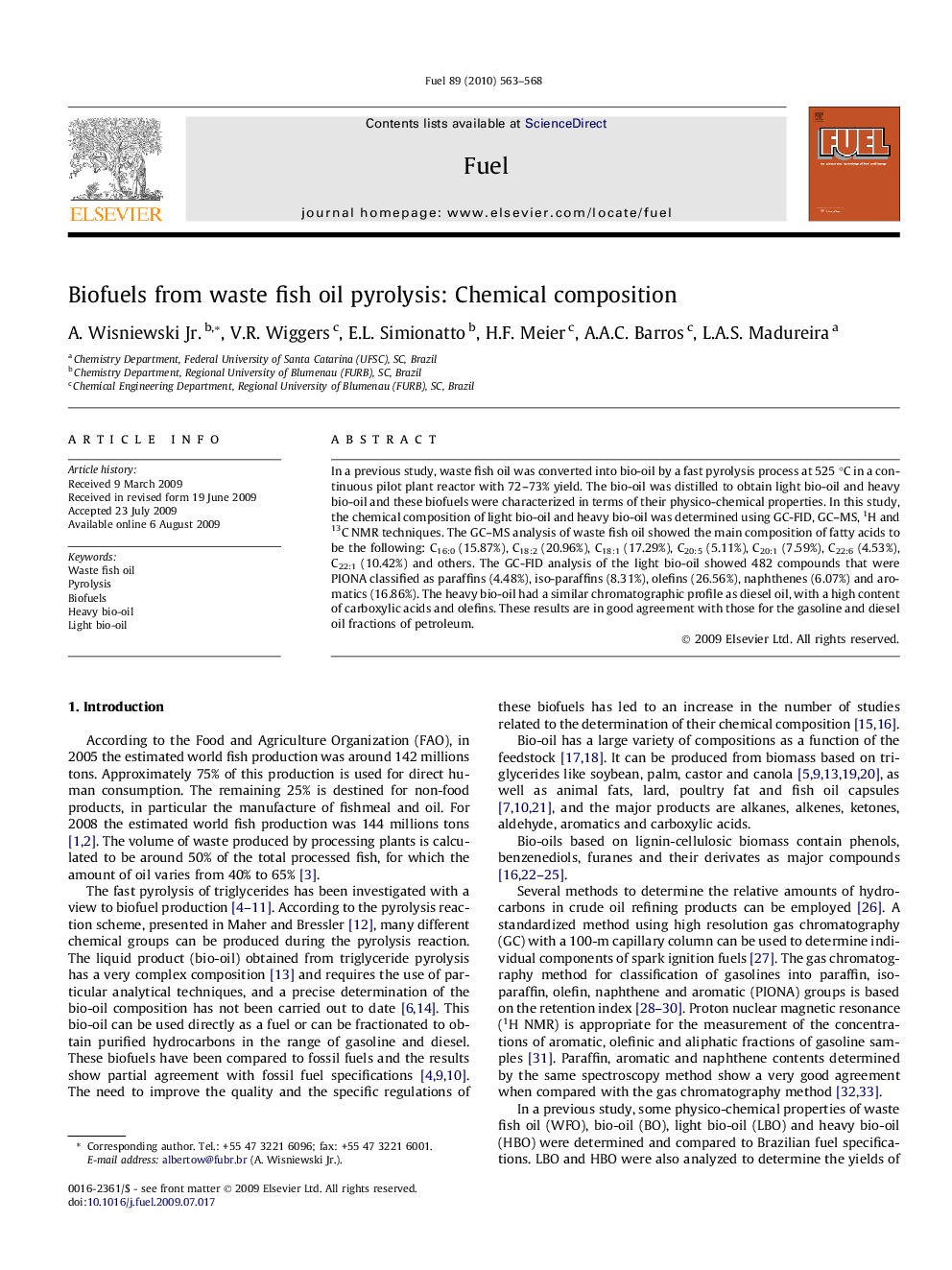| Article ID | Journal | Published Year | Pages | File Type |
|---|---|---|---|---|
| 207669 | Fuel | 2010 | 6 Pages |
In a previous study, waste fish oil was converted into bio-oil by a fast pyrolysis process at 525 °C in a continuous pilot plant reactor with 72–73% yield. The bio-oil was distilled to obtain light bio-oil and heavy bio-oil and these biofuels were characterized in terms of their physico-chemical properties. In this study, the chemical composition of light bio-oil and heavy bio-oil was determined using GC-FID, GC–MS, 1H and 13C NMR techniques. The GC–MS analysis of waste fish oil showed the main composition of fatty acids to be the following: C16:0 (15.87%), C18:2 (20.96%), C18:1 (17.29%), C20:5 (5.11%), C20:1 (7.59%), C22:6 (4.53%), C22:1 (10.42%) and others. The GC-FID analysis of the light bio-oil showed 482 compounds that were PIONA classified as paraffins (4.48%), iso-paraffins (8.31%), olefins (26.56%), naphthenes (6.07%) and aromatics (16.86%). The heavy bio-oil had a similar chromatographic profile as diesel oil, with a high content of carboxylic acids and olefins. These results are in good agreement with those for the gasoline and diesel oil fractions of petroleum.
